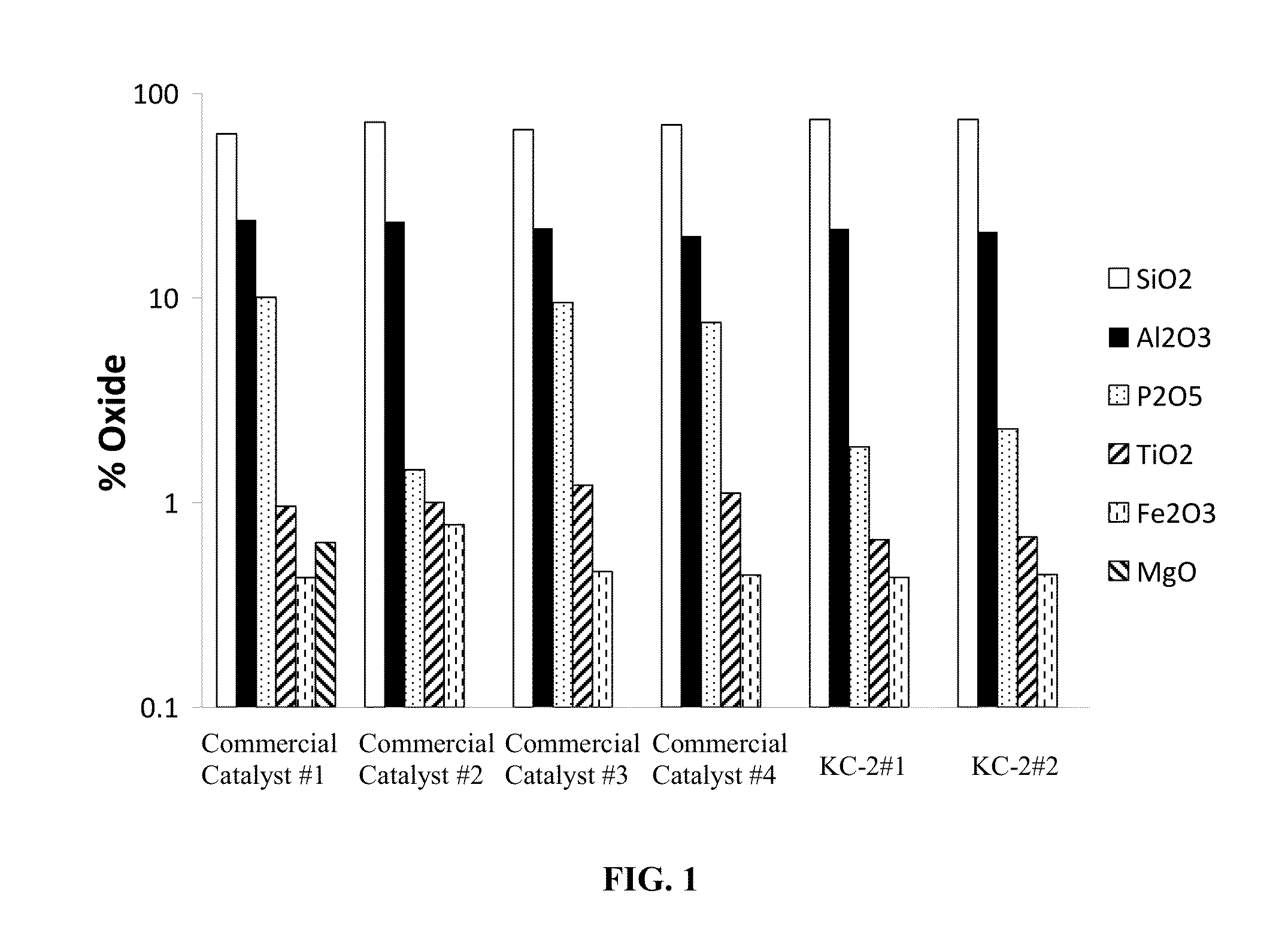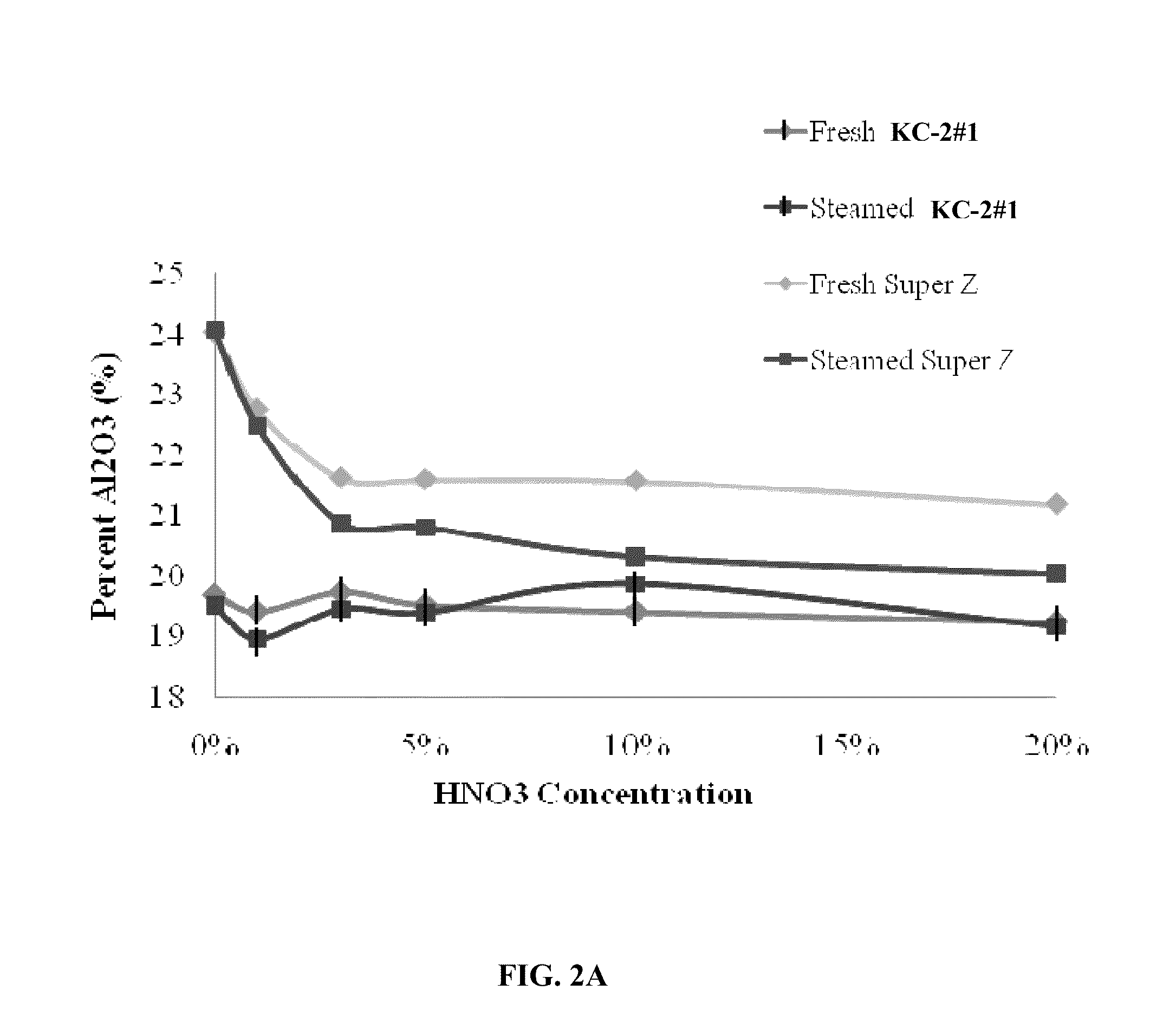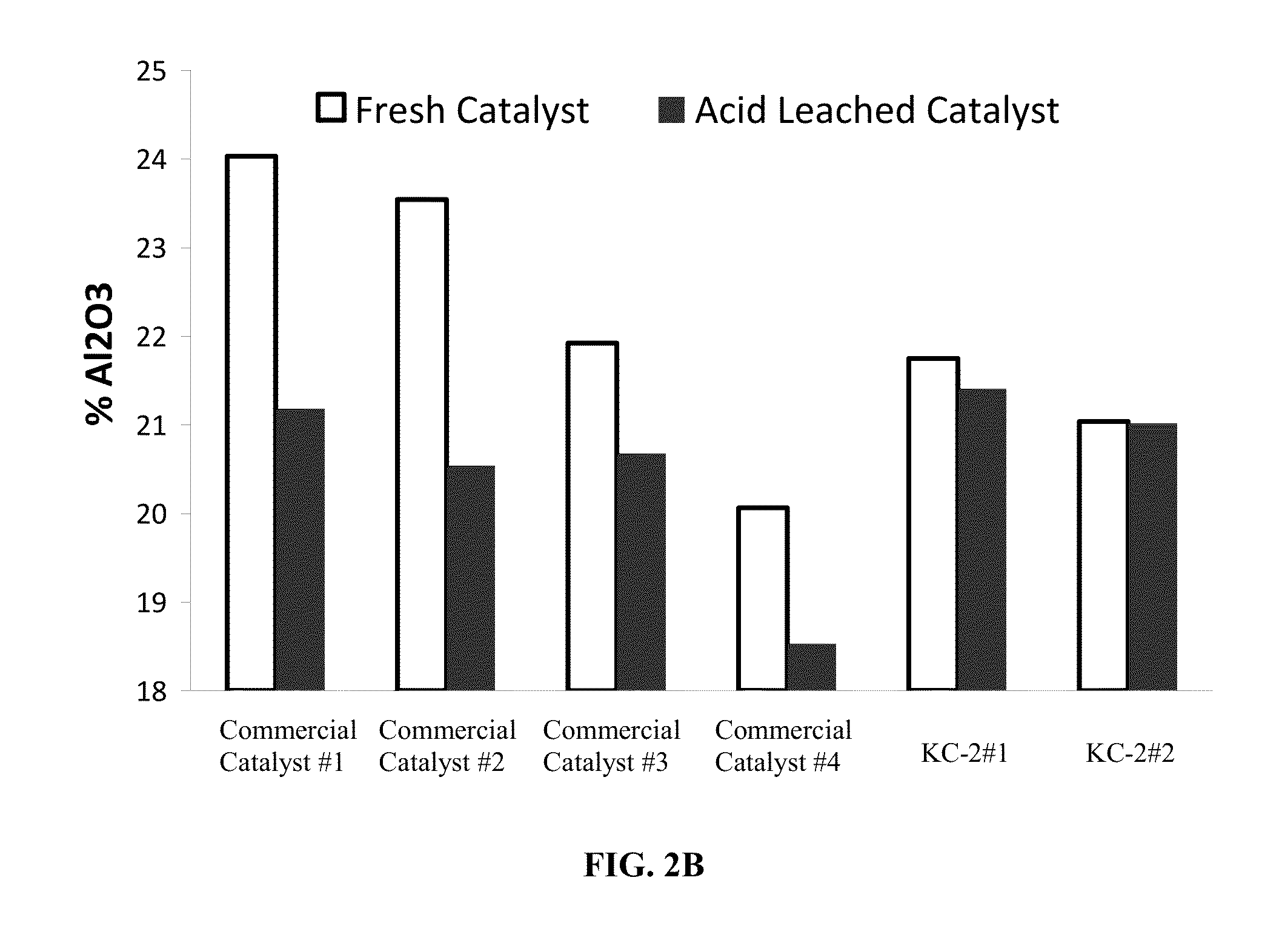Process for converting biomass to a fuel
a technology of biomass and fuel, which is applied in the field of zeolite-containing catalysts, can solve the problems of raising financial and ethical issues, reducing the chemical and physical accessibility of biomass, and reducing the susceptibility to chemical or enzymatic conversion
- Summary
- Abstract
- Description
- Claims
- Application Information
AI Technical Summary
Benefits of technology
Problems solved by technology
Method used
Image
Examples
example 1
Preparation of a Catalyst Containing Phosphorous-Promoted ZSM-5 Component and a Silica-Containing Binder
[0035]A catalyst (referred to herein as “KC-2” catalyst) having the following formulation was prepared:[0036]30 wt % P-ZSM-5, 9 wt % P2O5 on zeolite;[0037]26 wt % silicic acid binder;[0038]43.7 wt % kaolin (BASF ASP-600); and[0039]0.3 wt % tetrasodium pyrophosphate (TSPP).
[0040]Two samples of the KC-2 catalyst (referred to as “KC-2#1” and “KC-2#2”) were prepared and analyzed as described below.
ZSM-5 Phosphorous Pretreatment
[0041]ZSM-5 powder was slurried in water at 35% solids. The slurry was stirred for 15 minutes to disperse the powder properly at a temperature is in the range of 20-25° C.
[0042]In less than 30 seconds, the calculated amount of H3PO4 (56-85 wt %) was added to the ZSM-5 slurry (6-9 wt % based on the dry basis weight of the ZSM-5). The components were mixed for 5 minutes and pH was checked to be in the range of 1.8-2.5. The temperature change of slurry was negligib...
example 2
Comparison of the Amount of Amorphous Alumina Present in KC-2 and Super Z™ and the Effect of Steaming
[0059]Nitric acid extraction was used to determine the amorphous alumina content in each of the different catalysts using the procedure described herein. Twenty grams of each catalyst was mixed at room temperature for one hour with 100 g of different concentration of nitric acid (1, 3, 5, 10 or 20% v / v concentration). The mixture samples were filtered, washed with equal amounts of deionized water, dried and calcined at 600° C. before total surface analysis and XRF analysis was performed. A deionized (DI) water wash was used as a control.
[0060]Two catalyst KC-2 samples, KC-2#1 and KC-2#2 having the following formulation 30 wt % P-ZSM-5 / 26 wt % silicic acid binder / 43.7 wt % kaolin (BASF ASP-600) / 0.3 wt % TSPP were compared to four commercially available Fluid Catalytic Cracking (FCC) catalysts including the Super Z™ catalyst. The commercially available FCC catalysts are identified as “...
PUM
| Property | Measurement | Unit |
|---|---|---|
| temperatures | aaaaa | aaaaa |
| temperatures | aaaaa | aaaaa |
| particle size | aaaaa | aaaaa |
Abstract
Description
Claims
Application Information
 Login to view more
Login to view more - R&D Engineer
- R&D Manager
- IP Professional
- Industry Leading Data Capabilities
- Powerful AI technology
- Patent DNA Extraction
Browse by: Latest US Patents, China's latest patents, Technical Efficacy Thesaurus, Application Domain, Technology Topic.
© 2024 PatSnap. All rights reserved.Legal|Privacy policy|Modern Slavery Act Transparency Statement|Sitemap



